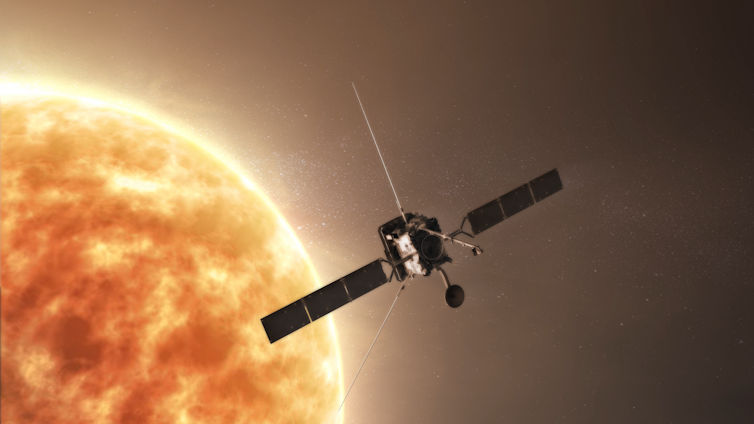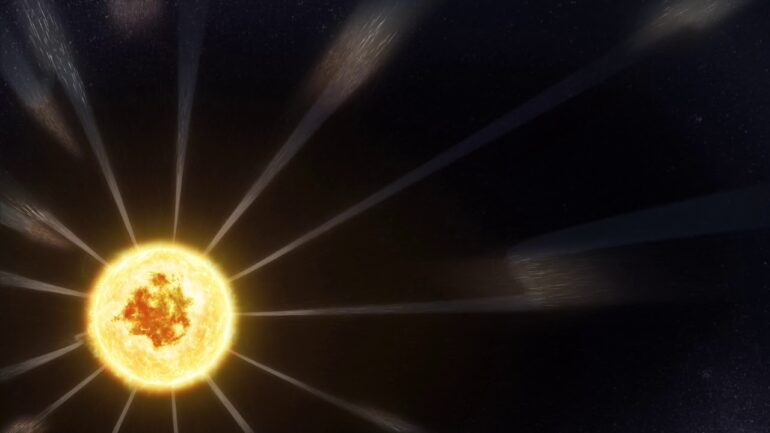Our Sun drives a constant outward flow of plasma, or ionized gas, called the solar wind, which envelops our solar system. Outside of Earth’s protective magnetosphere, the fastest solar wind rushes by at speeds of over 310 miles (500 kilometers) per second. But researchers haven’t been able to figure out how the wind gets enough energy to achieve that speed – until now.
Our team of heliophysicists published a paper in August 2024 that points to a new source of energy propelling the solar wind.
Solar wind discovery
Physicist Eugene Parker predicted the solar wind’s existence in 1958. The Mariner spacecraft, headed to Venus, would confirm its existence in 1962.
Since the 1940s, studies had shown that the Sun’s corona, or solar atmosphere, could heat up to very high temperatures – over 2 million degrees Fahrenheit (or more than 1 million degrees Celsius).
Parker’s work suggested that this extreme temperature could create an outward thermal pressure strong enough to overcome gravity and cause the outer layer of the Sun’s atmosphere to escape.
Gaps in solar wind science quickly arose, however, as researchers took more and more detailed measurements of the solar wind near Earth. In particular, they found two problems with the fastest portion of the solar wind.
For one, the solar wind continued to heat up after leaving the hot corona without explanation. And even with this added heat, the fastest wind still didn’t have enough energy for scientists to explain how it was able to accelerate to such high speeds.
Both these observations meant that some extra energy source had to exist beyond Parker’s models.

This artist’s rendition shows the European Space Agency’s Solar Orbiter orbiting the Sun.
NASA’s Goddard Space Flight Center Conceptual Image Lab
Alfvén waves
The Sun and its solar wind are plasmas. Plasmas are like gases, but all the particles in plasmas have a charge and respond to magnetic fields.
Similar to how sound waves travel through the air and transport energy on Earth, plasmas have what are called Alfvén waves moving through them. For decades, Alfvén waves had been predicted to affect the solar wind’s dynamics and play an important role in transporting energy in the solar wind.
However, scientists couldn’t tell whether these waves were actually interacting with the solar wind directly or if they generated enough energy to power it. To answer these questions, they’d have to measure the solar wind very close to the Sun.
In 2018 and 2020, NASA and the European Space Agency launched their respective flagship missions: the Parker Solar Probe and the Solar Orbiter. Both missions carried the right instruments to measure Alfvén waves near the Sun.
The Solar Orbiter ventures between 1 astronomical unit, where the Earth is, and 0.3 astronomical units, a little closer to the Sun than Mercury. The Parker Solar Probe dives much deeper. It gets as close as…



